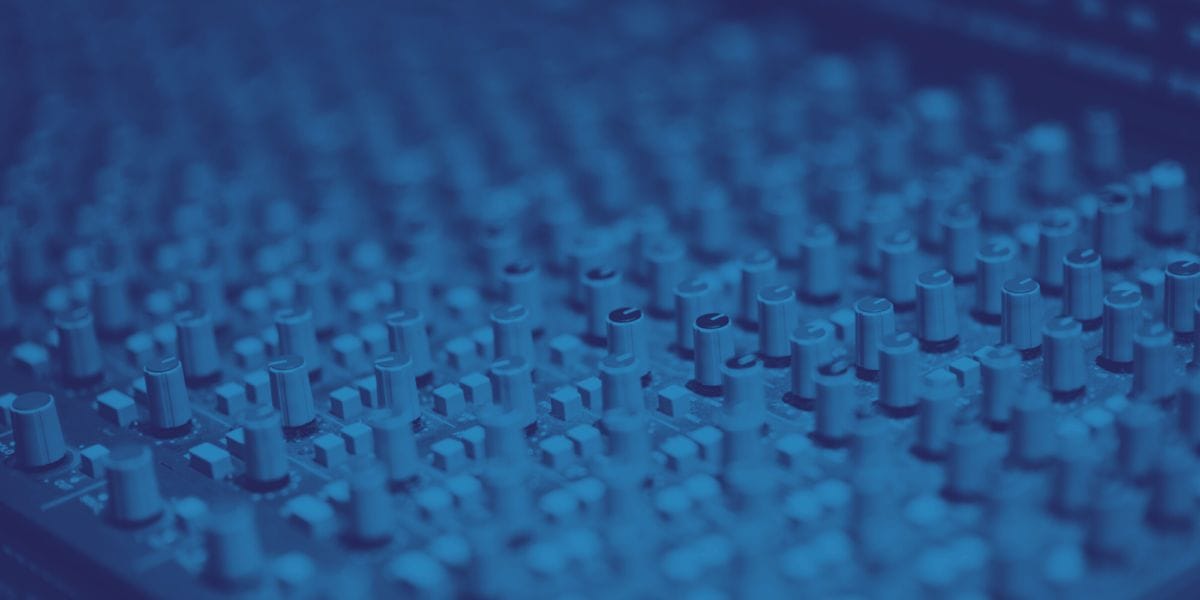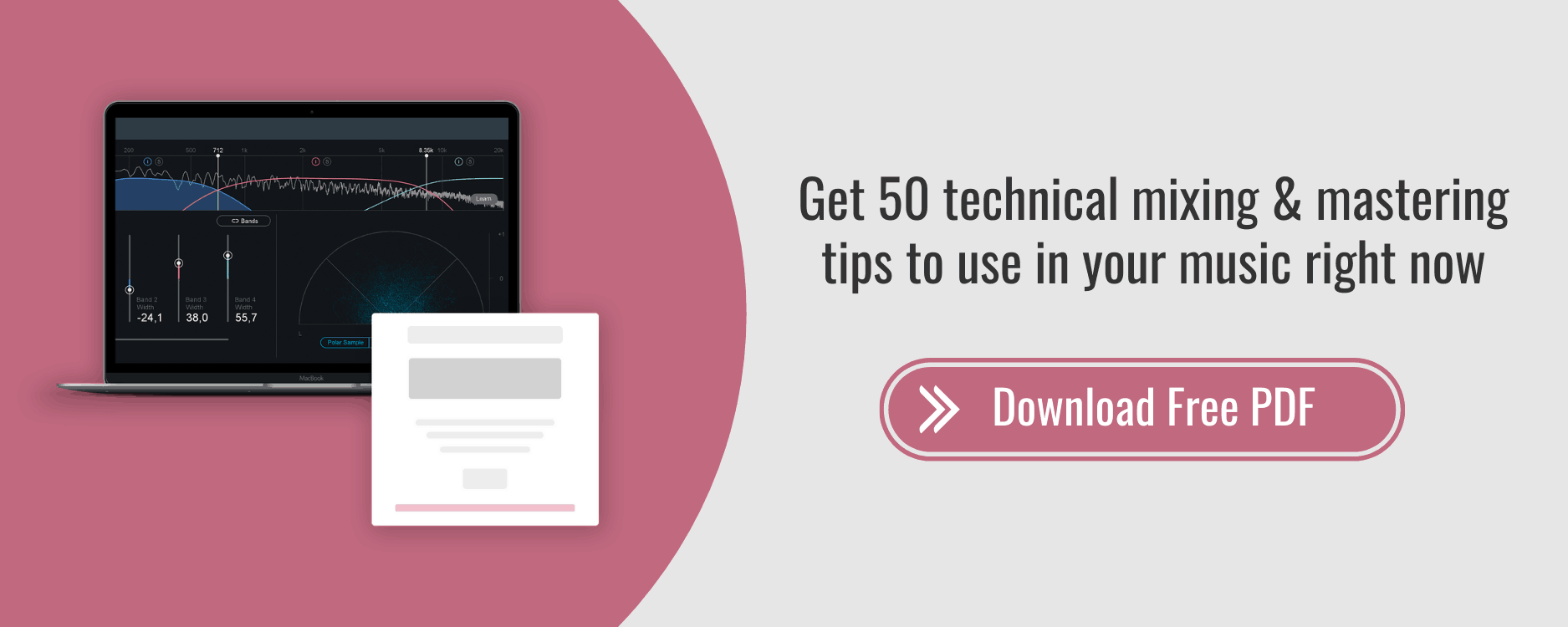Ultimate Guide to Multiband Compression: Tips, Techniques & Plugins
"Multiband compression can be one of the most useful tools in balancing the frequency content of a particular sound."
— Tony Maserati (Grammy-winning mixing engineer)
What is Multiband Compression?
If you fire up Google, the first definition you'll get for compression is the reduction of an audio signal's dynamic range. In lamen's terms, this can be done by making loud signals quieter, or by making quiet signals louder. Simple, right?
Well, a multiband compressor isn't actually all that different. It's like having 3 or 4 instances of a compressor all at once (each with their own ratios, thresholds, attack and release) but for each band! This means, quite frankly, that the level of control and accuracy you gain from using a multiband compressor is second to none. That's exactly why we're about to dive deep into our favorite multiband compressor tips, techniques and plugins.
Consider this blog post a Masterclass on multiband compression. Over the past month, we’ve been uploading 2 videos per week on the Hyperbits YouTube channel detailing 8 incredible ways to use multiband compression in your productions. By the end of this article, you should be completely caught up to speed on how to utilize multiband compression throughout your mix to help achieve you achieve clean and powerful masters.
What About Basic Compression?
In order to fully understand this article, you'll need a firm understanding of basic compression. Here is a quick 2 minute video that visually explains compression in the best way we know how.
Our Favorite Multiband Compressor Plugins
Before we get deep into our favorite multiband compression strategies, we thought it might be helpful to list out our top 5 favorite multiband compressors. This is by no means an extensive list, just our personal favorites with a few notes about what makes them so great.
FabFilter Pro-MB: Fantastic user-interface with extremely transparent results. Great for both mixing and mastering.
iZotope Ozone Dynamics: Does a great job balancing out the low end, getting your sub to sit right in the mix.
Waves C4 Multiband Parametric Processor: Amazing for vocals to reign in a very dynamic performance and shape the tone.
Ableton Multiband Compressor: CPU savor without any lacking quality. Super simple interface as well.
UAD Precision Multiband: Great analog flavor of multiband compression. Nice on real instruments.
Like most cases, the tools you are using aren't as important as the concepts behind them. Sure, some of these plugins sound great, but that doesn't mean you should go out and splurge before you even have a subtle understanding of using your DAW's internal multiband compressor. Start there, and then expand. That said, let's get into the good stuff...
1. Group Processing
Gelling together synth stacks or various instrument layers is crucial in getting your sounds to feel unified and cohesive. Multiband compression can work wonders here because unlike a normal compressor, multiband compression has much more control in handling a full-spectrum sound. Essentially, you can take wildly different sounds with different dynamic ranges and still find a way to mesh them together in a transparent way.
There is also the added benefit of complete tonal balance control by adjusting each frequency band. Think of each band as an EQ. The more compression happening on a given band means the quieter that band is (unless you make up the gain reduction). So, if you want less high end in the sound, try compressing the high band more. This can be applied at various bands of the multiband compressor to have complete control over the tone of the sound.
Bonus Tip: Be careful to watch out for distortion down here! The attack and release settings of your multiband compressor are super important here (longer attack and quicker release generally yield less distortion).
2. Multiband Sidechaining
Sidechaining can be the key to making space in your mix when you use two similar element are playing at once. Although most commonly used to make space for a kick drum, sidechain can be used on many other elements in the mix. Multiband sidechaining takes that to another level by allowing you to only sidechain certain frequencies of a sound as opposed to the entire signal.
This can work wonders for masking. Let’s say you have a vocal and a guitar playing at once - you could find the conflicting frequency bands between the guitar and vocal, and then dip the guitar signal ONLY when the vocal is playing! This results in an incredible, beautiful dynamic relationship that will almost always beat out static EQ moves.
What’s great about this is that the entire guitar signal doesn’t diminish in its energy and presence. In fact, in this scenario, we’ve only corrected the masking problem at the exact moment it occurs. That’s an amazing thing.
3. Reference A Master
Multiband compressors are also great for isolating individual bands in the mastering process. Where this is really eye opening is when you compare certain frequencies of your song to a reference. It’s sometimes hard to judge your song to a reference when you’re hearing the whole spectrum all at once, but being able to solo certain frequency bands will allow your ear to hone in and focus on a smaller frequency section, and thus, make adjustments as necessary.
You can also make volume adjustments here too. If you find that one band is way quieter than your reference, simple raise the volume or apply some subtle compression and added gain to create a similar energy level to your reference. In an ideal situation, you could make these moves within the mix, but sometimes as mastering engineers, you don’t always have that luxury and are forced to work with only a one-track stereo pre-master.
If you want to learn more about loudness in your master, check out The Ultimate Guide to Loudness.
4. De-esser on Reverb Bus
De-essing is a common multiband compression technique to remove unwanted harshness from Vocal Sibilance (harsh sounds in the 3-10K range, usually derived from ‘s’ sounds). This can work wonders directly on a very sibilant sound but can also be effective on send or bus tracks. Specifically, reverbs on vocals can exaggerate that nasty sibilance if not properly managed. Placing a de-esser on the reverb signal and eliminating that harshness can not only clean up your vocal but allow for a louder and more intense reverb effect.
Don’t let this stop just with vocals either. Multiband de-essing can be super useful in reducing unwanted harshness from any sound in the mix. Try this on your leads, percussion, etc. especially if you have already applied lots of distortion and saturation.
To learn similar techniques to de-essing head over to our 8 Step Finishing Checklist.
5. OTT Tips & Tricks
OTT or “over-the-top” compression has really changed the game with making your sounds pop in the mix. In combining both traditional downward compression with upward compression, a sound is able to appear much fuller and louder than it is. This is because the dynamic range is being forced to become smaller and smaller, so that finally, when make-up gain is applied the sound feels huge. This is also super effective because it’s a multiband compression process. Having control over each individual band really lets you decide which part of the sound you want to become full and present.
Be careful to not overdo it though! Often, I’m scaling back my OTT moves because they’re simply too drastic. Check out the dry/wet and time scaling features of OTT and make sure to adjust them to provide transparency and to not destroy the dynamics of your sounds too much.
6. Controlling Harsh High-End
It’s really easy to have harsh high-end frequencies destroy your mix. This can especially be a problem when using impacts and highly-transient material during your track (usually due to white noise effects and crashes/cymbals). Using multiband compression on the highs of your mix or even just the high-end elements cause really help diminish the shrill impact of most sounds. You can think of this as piercing high frequency transients that need to be tamed. If we were to use a normal compressor we’d essentially be destroying all the energy and presence of a sound, but if we only apply this to the higher frequencies (>7k Hz) it’s far less damaging.
This is can also be really fun to experiment with on just the sides on your mix. It’s very easy for the high end on the sides to become harsh, so only fixing issues there might be the right course of action as opposed to applying this type of treatment across the entire stereo sound.
7. Mastering Low-End Punch
Electronic music completely relies on a powerful and full low-end. It can be one of the hardest things to get right, especially when comparing to properly mixed reference tracks. Multiband compression can be the perfect solution to getting your sub frequencies to remain constant, full and steady.
This really helps when you have sub notes that don’t hit as hard as that E0-G#0 range. In fact, the smaller and more limited your dynamics are in your sub the larger and bigger your hard-hitting electronic track can sound. Try tightening up the kick-sub relationship below ~130Hz by applying compression to just this lower band and add back the make-up gain. This will give more presence and constant sub energy to your mix.
Note: Be careful to watch out for distortion down here! The attack and release settings of your multiband compressor are super important here (longer attack and quicker release generally yield less distortion).
Still struggling with fullness in your low-end? You might need more layering. That’s why I put together an epic, FREE 90-minute workshop covering some of my favorite production techniques, layering included.
8. Tame Hardware Synths
Hardware synths can be fairly unpredictable at times (this is also why they are so amazing, btw). However, it’s often necessary to tame the aggressive characteristics of a hardware synth to make sure it’s not creating problems in your mix.
This method can be applied to any sound, but hardware synths generally need more correctional work than digital ones. Essentially, multiband compression can be used as a general tool brush to adjust frequency bands throughout any sound. Think of compression here as a type of EQ with the ability to also increase RMS and perceived loudness of a sound. Any particular band of a synth can be increased or decreased in presence and fullness with a multiband compressor. It’s sometimes much better to use compression to handle this over EQ because it can appear to be a lot more transparent.
If you’re still at all confused, try to think of multiband compression as a way to adjust the volume and presence of any particular band. If you compress something, it gets quieter and its dynamic range gets smaller. So, if something is too bright, try compressing the highs more. Just using an EQ can also work, but the sound might not appear as full as the alternative of using a multiband compressor.
Multiband Compression: is it worth it?
Multiband compression is one of the easiest ways to mess up your track - but it shouldn’t be feared. Just because it might look a little scary and overwhelming doesn’t mean it can’t be mastered with some help and guidance. By no means is this a complete and extensive list of ways to use multiband compression, but it certainly is enough to get you going.
Be sure to watch all the example videos in their entirety to fully grasp 8 new ways to use multiband compression, and follow us on the Hyperbits YouTube channel for consistent, high-quality production tips twice per week.
How are you guys using multiband compressors? Do find them hard to work with? Do you have any tips or techniques we should add to this article? Let us know in the comments.




